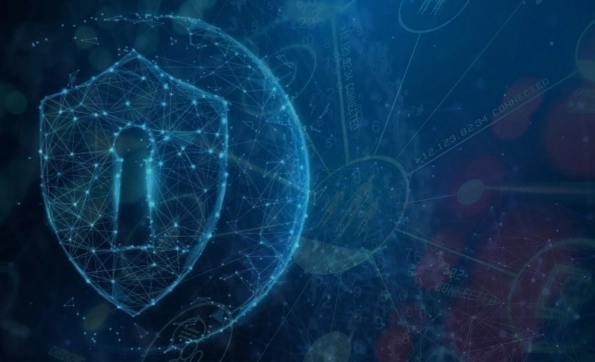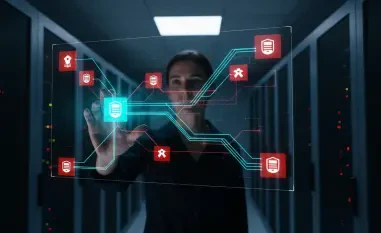In today’s digital age, navigating the complex and constantly evolving world of cybersecurity can be daunting. Initially designed as a tool for Chief Information Security Officers (CISOs), the CISO Compass has evolved into the more inclusive Cybersecurity Compass. This strategic guide aims to serve a broad spectrum of cybersecurity professionals, from SOC analysts to CEOs, offering a reliable framework for managing and mitigating threats before, during, and after a cyber breach.
The shift from a CISO-specific tool to one encompassing the entire organization marks a profound change in how cybersecurity strategies are developed and implemented. This transformation acknowledges that the task of securing a digital environment does not lie solely with a single role but spans far and wide across different functional areas. The Cybersecurity Compass now caters to various roles including SOC analysts, vulnerability managers, pentesters, and even high-level executives such as CIOs, CFOs, and CEOs. By doing so, it aims to foster a coordinated and comprehensive approach across different levels of an organization, ultimately strengthening its overall cybersecurity posture.
From CISO Compass to Cybersecurity Compass
The evolution from the CISO Compass to the Cybersecurity Compass marks a significant shift in how cybersecurity strategies are developed and implemented. The original CISO Compass was tailored for executives responsible for information security at a high level. However, it quickly became evident that the principles and strategies could benefit a wider audience within the cybersecurity community.
The Cybersecurity Compass broadens its utility, making it a valuable tool for various roles, including SOC analysts, vulnerability managers, pentesters, and even C-suite executives like CIOs, CFOs, and CEOs. This broadened application aims to foster a more coordinated and comprehensive approach to cybersecurity across different levels of an organization.
The compass metaphor aptly represents its role as a guide. Just as a physical compass provides direction in uncharted territories, the Cybersecurity Compass offers strategic and tactical guidance in navigating the complex digital landscape filled with sophisticated threats and challenges.
The expansion of the Cybersecurity Compass signifies not just a change in scope but also a fundamental shift in approach. By adopting a more inclusive perspective, the framework emphasizes the importance of cross-functional collaboration. For instance, a SOC analyst’s expertise in threat detection now complements a vulnerability manager’s role in risk prioritization. Similarly, pentesters can work in tandem with executive leaders to fortify defenses based on real-world simulations and scalable strategies. The adoption of this collective approach underlines the necessity of viewing cybersecurity as an organizational imperative rather than a siloed responsibility.
Strategic Navigation Before a Breach
Preparation is key in cybersecurity, and this begins well before any breach occurs. For Chief Information Security Officers, this means employing strategies to protect digital assets, implementing robust security measures, and ongoing employee education.
SOC analysts utilize the Cybersecurity Compass to identify and prioritize potential threat vectors. By doing so, they enhance their ability to detect and analyze threats early, potentially preventing breaches from occurring.
Vulnerability management teams focus on assessing and prioritizing risks to reduce the attack surface. This proactive approach helps ensure that the most critical vulnerabilities are addressed first, minimizing the chances of exploitation.
Pentesters and red teams employ the Cybersecurity Compass to plan and execute tests, simulating real-world attacks. These exercises help identify weaknesses in an organization’s defenses, enabling them to fortify their systems before a malicious actor can exploit them.
Before a breach occurs, the emphasis is clearly on laying the groundwork for strong cybersecurity practices. CISOs must harness the Cybersecurity Compass to ensure that policies, procedures, and technologies are in place to safeguard vital digital assets. This involves not just adopting cutting-edge security solutions but also fostering a culture of continuous security awareness among employees. Regular training and simulations can go a long way in enhancing the vigilance and responsiveness of an organization’s workforce.
SOC analysts benefit from the structured approach provided by the Cybersecurity Compass. By identifying potential threat vectors and prioritizing them based on severity and likelihood, analysts can fine-tune their monitoring and detection capabilities. This early-stage scrutiny is critical for spotting anomalies that could indicate an impending breach, thereby allowing for swift preemptive action. Additionally, vulnerability management teams capitalize on this phase by conducting thorough risk assessments. Using the Cybersecurity Compass, they can map out the organization’s attack surface and systematically fortify the most critical areas. This targeted risk mitigation ensures that resources are allocated efficiently, focusing on vulnerabilities that pose the highest risk of exploitation.
Responding Effectively During a Breach
When a breach does occur, swift and coordinated action is crucial. The Cybersecurity Compass provides a structured framework for response, guiding different roles within the organization.
CISOs play a pivotal role in facilitating clear communication and coordinating the overall response. Their strategic oversight ensures that all aspects of the incident are addressed promptly and effectively.
SOC analysts implement incident response protocols, using the guidelines provided by the Cybersecurity Compass to contain and mitigate the impact of the breach. Their real-time analysis and quick action are essential in minimizing damage.
Vulnerability management teams must quickly identify and mitigate exploited vulnerabilities. The Cybersecurity Compass helps them prioritize their efforts, focusing on the most immediate threats to prevent further exploitation.
Red and purple teams execute attack simulations to test the effectiveness of the organization’s defenses even during an active breach. This dynamic approach helps identify gaps and optimize response strategies in real time.
During the frenetic period of responding to an active breach, the value of a well-defined framework like the Cybersecurity Compass becomes particularly evident. CISOs must act as conductors, orchestrating the myriad responses from various teams to ensure a coherent and effective defense. Their role in clear communication cannot be overstated; a unified and transparent approach ensures that all stakeholders are informed and proactive measures are implemented in a timely manner.
SOC analysts are the operational backbone during a breach, relying heavily on the Cybersecurity Compass to execute incident response protocols effectively. Their role involves not only detecting and diagnosing the scope of the breach but also implementing containment strategies to halt further spread. The guidance from the Cybersecurity Compass proves invaluable in this context, offering clear directives on prioritization and mitigation. Vulnerability management teams, on the other hand, are thrust into a reactive mode. Identifying and mitigating exploited vulnerabilities become their immediate priority. The structured prioritization offered by the Cybersecurity Compass enables these teams to focus on the most critical vulnerabilities first, thereby reducing the chance of further compromise.
Strengthening Post-Breach Resilience
The aftermath of a breach is a critical period for any organization. The Cybersecurity Compass provides a roadmap for recovery and future preparedness.
CISOs update incident response plans based on lessons learned. Incorporating Zero Trust strategies and enhancing overall security policies are key steps in strengthening resilience.
SOC analysts conduct thorough post-incident reviews to understand the root causes of the breach. This analysis helps refine detection and response mechanisms, making them more robust against future threats.
Vulnerability management teams develop comprehensive remediation plans. By addressing identified weaknesses, they reduce the likelihood of future breaches and enhance the organization’s security posture.
Blue teams focus on analyzing response efforts to improve defenses. Their insights contribute to a more resilient cybersecurity strategy, ensuring that the organization is better prepared for any future incidents.
In the post-breach phase, the emphasis shifts from crisis management to learning and improvement. CISOs lead the effort to update incident response plans, embedding lessons learned into new policies and procedures. The adoption of Zero Trust strategies becomes a focal point, aiming to minimize the risk of future unauthorized access. SOC analysts delve into comprehensive post-incident reviews, identifying root causes and gaps in initial detection. This detailed analysis allows for the fine-tuning of existing mechanisms, making them more adept at identifying and neutralizing future threats before they escalate. Meanwhile, vulnerability management teams take a proactive stance. Drawing from the Cybersecurity Compass, they develop thorough remediation plans that address all identified vulnerabilities. This forward-focused approach significantly reduces the organization’s risk profile, fortifying its cybersecurity defenses.
Role-Specific Utility and Broader Impact
Preparation is crucial in cybersecurity, beginning well before any incident occurs. Chief Information Security Officers (CISOs) need to deploy strategies to protect digital assets, enforce strong security measures, and continuously educate employees.
Security Operations Center (SOC) analysts use the Cybersecurity Compass to pinpoint and rank potential threat vectors. This careful identification enhances their ability to detect and understand threats early, potentially stopping breaches before they happen.
Vulnerability management teams concentrate on assessing risks to minimize the attack surface. By focusing on the most critical vulnerabilities first, they reduce the chances of exploitation.
Penetration testers (pentesters) and red teams rely on the Cybersecurity Compass to organize and carry out tests, simulating real-world attacks. These exercises reveal weaknesses in an organization’s defenses, allowing them to strengthen their systems proactively.
Before a breach occurs, it’s essential to lay a strong cybersecurity foundation. CISOs must utilize the Cybersecurity Compass to ensure policies, procedures, and technologies are in place to guard crucial digital assets. This entails not only adopting state-of-the-art security solutions but also promoting a culture of ongoing security awareness among employees. Regular training and simulations significantly boost the vigilance and responsiveness of an organization’s workforce.
SOC analysts benefit from the structured approach of the Cybersecurity Compass. By identifying and prioritizing potential threats, they can fine-tune their monitoring and detection efforts. Early detection of anomalies that may signal a breach allows for swift action. Vulnerability management teams benefit from comprehensive risk assessments using the Cybersecurity Compass, mapping out the organization’s attack surface and focusing on the most critical areas. This ensures resources are allocated efficiently, targeting vulnerabilities that pose the highest risk.













